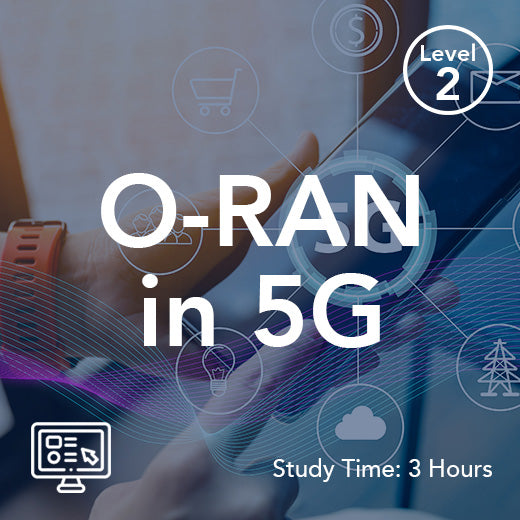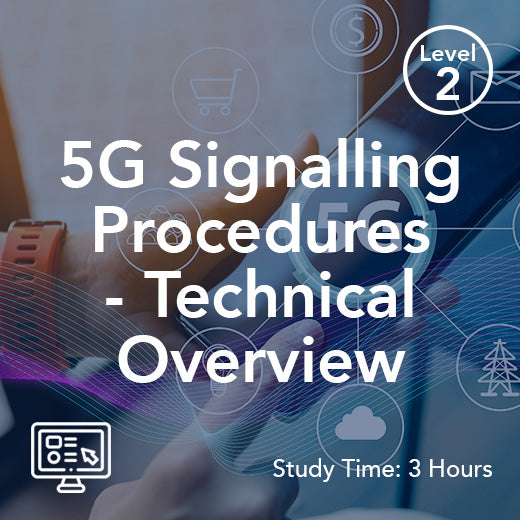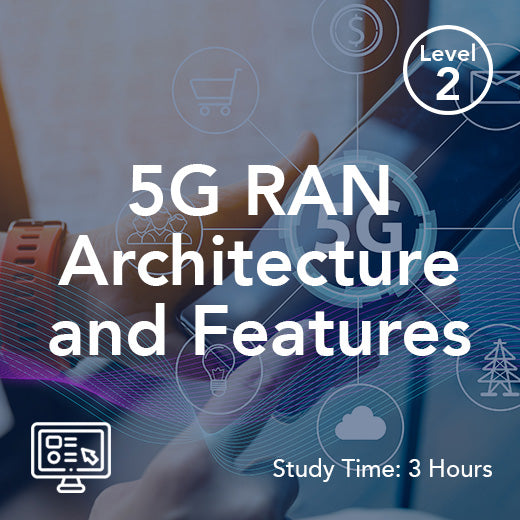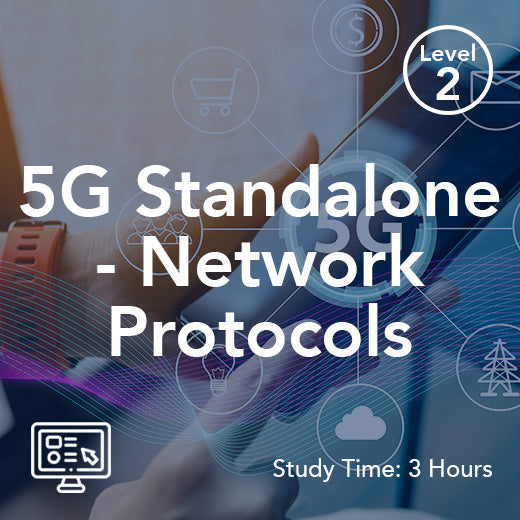Comprendre l'accès mobile sans licence : un guide simple pour tous
- , par Stephanie Burrell
- 14 min temps de lecture
Dans le monde numérique en évolution rapide d'aujourd'hui, rester connecté est plus important que jamais, et l'accès mobile sans licence (UMA) joue un rôle central en rendant cela possible avec divers services mobiles. La technologie UMA permet aux téléphones mobiles de basculer de manière transparente entre les réseaux cellulaires et le Wi-Fi, garantissant ainsi la continuité des appels et des services de données. En exploitant les réseaux Wi-Fi existants, UMA fournit un service fiable même dans les zones où la couverture cellulaire est faible, contribuant ainsi à éliminer les zones mortes redoutées. Ce guide dévoilera les complexités de l'UMA, en décrivant son fonctionnement et les avantages qu'il offre aux utilisateurs quotidiens. Que vous soyez féru de technologie ou simplement curieux, vous comprendrez bientôt comment UMA peut améliorer votre expérience mobile.
Introduction à l'accès mobile sans licence
L'accès mobile sans licence (UMA) a transformé la façon dont nous restons connectés, permettant aux appareils mobiles de basculer de manière transparente entre les réseaux. Cette section approfondit les aspects essentiels de l'UMA, son contexte historique et son lien avec les technologies de spectre sans licence, qui prennent une importance croissante dans notre monde centré sur le mobile.
Qu’est-ce que l’accès mobile sans licence ?
L'accès mobile sans licence (UMA) est une technologie qui permet aux téléphones mobiles de basculer entre les réseaux cellulaires et les réseaux Wi-Fi sans interruption. L'objectif principal de l'UMA est d'améliorer la connectivité au réseau mobile central, en particulier dans les zones où les signaux cellulaires sont faibles. En tirant parti de l’infrastructure Wi-Fi existante, les utilisateurs peuvent profiter d’appels vocaux et de services de données ininterrompus, éliminant ainsi les zones mortes.
Cette technologie fonctionne en créant une connexion virtuelle entre les appareils mobiles et le réseau de télécommunications via le Wi-Fi. Cette connexion est gérée via un tunnel sécurisé, garantissant que la transition entre les réseaux est transparente. Il est important de noter qu'UMA ne nécessite aucun matériel supplémentaire, ce qui en fait une solution rentable tant pour les utilisateurs que pour les fournisseurs de réseau.
Essentiellement, UMA comble le fossé entre les réseaux cellulaires traditionnels et les capacités Wi-Fi modernes, offrant une expérience de communication unifiée. Il s’agit d’une solution pratique pour améliorer la connectivité et offrir une meilleure couverture et une satisfaction globale des utilisateurs.
Histoire et évolution de l'UMA
La technologie UMA est apparue au début des années 2000 en réponse aux limites de la couverture cellulaire. Initialement développé pour améliorer la qualité du signal intérieur, il a rapidement gagné du terrain grâce à sa capacité à fournir des solutions rentables via des réseaux sans fil sans licence et une communication fiable.
L'évolution de l'UMA a été influencée par les progrès de la technologie Wi-Fi et la demande croissante d'une connectivité transparente. À mesure que les smartphones sont devenus omniprésents, le besoin d'une communication ininterrompue sur les réseaux GSM s'est accru, propulsant le développement de l'UMA. Au fil du temps, cette technologie s’est affinée pour offrir des connexions de meilleure qualité et plus sécurisées.
Grâce à une innovation continue, UMA est passée d'une solution de niche à une technologie grand public. Son adoption par les principaux opérateurs de télécommunications du monde entier témoigne de son rôle essentiel dans la communication moderne entre opérateurs de réseaux. À mesure que les technologies cellulaires et Wi-Fi progressent, UMA continue d’évoluer, s’adaptant aux nouvelles normes et attentes des utilisateurs.
Importance dans le monde mobile d'aujourd'hui
Dans le monde mobile d'aujourd'hui, la connectivité est primordiale. UMA joue un rôle crucial en garantissant que les utilisateurs restent connectés via la technologie LAN sans fil, quel que soit leur emplacement. En permettant des transitions transparentes entre les réseaux Wi-Fi et cellulaires, UMA améliore la fiabilité et la qualité des communications.
L’importance de l’UMA est soulignée par le recours croissant aux appareils mobiles pour les communications personnelles et professionnelles. Alors que de plus en plus de personnes travaillent à distance et dépendent des réseaux mobiles, UMA offre une solution pratique pour maintenir une connectivité cohérente. Il garantit que les appels et les services de données ne sont pas perturbés par une mauvaise couverture cellulaire, en particulier lorsque les réseaux cellulaires préférés ne sont pas disponibles.
De plus, UMA répond à la demande croissante de services de données à haut débit et d'une qualité d'appel améliorée dans le spectre GSM ou UMT. En tirant parti des réseaux Wi-Fi, il réduit la pression sur les réseaux cellulaires, améliorant ainsi les performances globales du réseau et l'expérience utilisateur.
Comment fonctionne la technologie UMA
Comprendre le fonctionnement de l’UMA est essentiel pour apprécier ses avantages. Dans cette section, nous explorons les principes de base, les composants techniques et la manière dont UMA se compare aux solutions réseau traditionnelles.
Principes de base derrière l'UMA
UMA fonctionne sur le principe de l'intégration des réseaux cellulaires avec les systèmes Wi-Fi. Cette intégration permet aux appareils mobiles de basculer en douceur entre les deux, garantissant ainsi un service ininterrompu. La technologie sous-jacente consiste à créer un tunnel IP sécurisé sur le réseau d'accès générique pour se reconnecter au réseau central de l'opérateur mobile.
Ce processus est facilité par un composant appelé UNC (UMA Network Controller). L'UNC agit comme un pont entre les réseaux Wi-Fi et cellulaires, gérant le processus de transfert. Lorsqu'un appareil sort de la portée Wi-Fi, l'UNC assure une transition transparente vers le réseau cellulaire, et vice versa.
La clé de l'efficacité de l'UMA réside dans sa capacité à utiliser les infrastructures existantes. En utilisant les réseaux Wi-Fi déjà en place, cela minimise le besoin d’investissements supplémentaires en matériel. Cela fait de l'UMA une option attrayante tant pour les consommateurs que pour les fournisseurs de réseaux d'accès génériques.
Composants techniques de l'UMA
Le cadre technique de l'UMA implique plusieurs composants essentiels qui fonctionnent ensemble pour faciliter une connectivité transparente. Au cœur de cette configuration se trouve le contrôleur de réseau UMA (UNC) , qui sert de lien essentiel entre les réseaux Wi-Fi et cellulaires.
Appareil mobile : équipé de capacités cellulaires et Wi-Fi, l'appareil communique avec les deux réseaux selon les besoins.
Point d'accès Wi-Fi : Fournit la connexion à Internet, permettant à l'appareil mobile de se connecter au réseau du fournisseur de services via Wi-Fi.
Contrôleur de réseau UMA (UNC) : gère le tunnel sécurisé entre l'appareil mobile et le réseau central, garantissant un transfert transparent entre les réseaux Wi-Fi et cellulaires.
Core Network : réseau du fournisseur de services, qui gère les appels et les services de données, garantissant une intégration et une fourniture de services transparentes.
L'intégration de ces composants garantit aux utilisateurs un service ininterrompu lorsqu'ils se déplacent entre différents environnements réseau, améliorant ainsi la connectivité globale.
Comparaison de l'UMA aux réseaux traditionnels
Lorsque l’on compare UMA aux solutions réseau traditionnelles, plusieurs différences apparaissent. Ces différences mettent en évidence les avantages de l'UMA dans la communication moderne.
Fonctionnalité | UMA | Réseaux traditionnels |
|---|---|---|
Transition réseau | Transparent entre le Wi-Fi et le cellulaire | Limité au cellulaire |
Infrastructure | Utilise le Wi-Fi existant | Nécessite des tours cellulaires |
Coût | Moins élevé en raison des infrastructures existantes | Plus élevé en raison des besoins en infrastructures |
Couverture | Amélioré à l'intérieur | Souvent limité à l’intérieur |
La capacité d'UMA à exploiter l'infrastructure Wi-Fi existante offre une alternative rentable aux réseaux traditionnels. Ses capacités de transition transparentes réduisent les interruptions d'appels et améliorent l'expérience utilisateur, en particulier à l'intérieur, où seuls les réseaux cellulaires ont souvent du mal, là où les réseaux traditionnels ont souvent du mal.
Avantages de l'accès mobile sans licence
UMA offre plusieurs avantages qui améliorent la connectivité et l'expérience utilisateur. Cette section explore ces avantages, en se concentrant sur la rentabilité, les transitions fluides et la satisfaction des utilisateurs.
Connectivité rentable
L'un des avantages les plus remarquables d'UMA est sa rentabilité. En utilisant les réseaux Wi-Fi existants, UMA réduit le besoin d'investissements coûteux dans l'infrastructure cellulaire. Ceci est particulièrement avantageux dans les zones à couverture cellulaire limitée, notamment en ce qui concerne la station de base.
Économies d'infrastructure : l'utilisation des réseaux Wi-Fi élimine le besoin de nouvelles tours cellulaires, réduisant ainsi les frais généraux pour les fournisseurs de services.
Avantages pour le consommateur : les utilisateurs bénéficient de coûts réduits pour les appels et les données, car l'utilisation du Wi-Fi est souvent inférieure à celle des données cellulaires.
Accessibilité : UMA permet aux fournisseurs de services d'étendre leur couverture aux zones où la construction de nouvelles infrastructures n'est pas pratique.
En fin de compte, UMA offre une solution financièrement viable pour améliorer la connectivité sans engager de dépenses importantes.
Transition réseau transparente
UMA excelle dans la fourniture de transitions transparentes entre les réseaux Wi-Fi et cellulaires. Cette fonctionnalité est cruciale pour maintenir une communication ininterrompue, notamment pour les utilisateurs en déplacement.
Réduction des interruptions d'appels : le transfert transparent entre les réseaux minimise les interruptions, garantissant une qualité d'appel constante.
Services de données améliorés : les utilisateurs bénéficient d'une connectivité de données continue, améliorant ainsi les expériences de navigation et de streaming.
Satisfaction des utilisateurs : en éliminant les interruptions du réseau, UMA améliore la satisfaction globale des utilisateurs et la fiabilité.
La possibilité de basculer facilement entre les réseaux fait d’UMA une solution inestimable pour les besoins de communication modernes.
Améliorer l'expérience utilisateur
L'amélioration de l'expérience utilisateur est au cœur de la technologie UMA. En améliorant la connectivité et en réduisant les interruptions, UMA augmente considérablement la satisfaction des utilisateurs.
Fiabilité : UMA garantit que les utilisateurs restent connectés, même dans des environnements difficiles. Cette fiabilité est cruciale pour la communication personnelle et professionnelle.
Qualité : en tirant parti des réseaux Wi-Fi, UMA fournit des services voix et données de meilleure qualité, améliorant ainsi les expériences de communication globales.
Commodité : les utilisateurs bénéficient de la commodité de transitions transparentes, réduisant ainsi la frustration liée aux appels interrompus et aux services de données interrompus.
Dans un monde de plus en plus connecté, l'accent mis par UMA sur l'amélioration de l'expérience utilisateur en fait un élément essentiel de la communication mobile moderne.
Défis et limites de l’UMA
Si l’UMA offre de nombreux avantages, elle présente également des défis et des limites. Cette section examine les problèmes de sécurité potentiels, les problèmes de compatibilité et les restrictions réseau associés à UMA.
Problèmes de sécurité potentiels
La sécurité est une préoccupation commune à toute technologie réseau, et UMA ne fait pas exception. Même si UMA fournit une connexion sécurisée, il existe toujours des vulnérabilités potentielles.
Tunneling sécurisé : UMA utilise des tunnels IP sécurisés pour protéger les données, mais ceux-ci peuvent être sensibles aux attaques s'ils ne sont pas correctement gérés.
Vulnérabilités Wi-Fi : l'utilisation de réseaux Wi-Fi publics peut exposer les utilisateurs à des risques de sécurité, tels qu'un accès non autorisé ou une interception de données.
Assurance du fournisseur : il est crucial que les fournisseurs de services mettent en œuvre des mesures de sécurité robustes pour protéger les données des utilisateurs et maintenir la confiance.
Il est essentiel de répondre à ces préoccupations pour garantir une utilisation sûre et sécurisée de la technologie UMA.
Problèmes de compatibilité
La compatibilité peut constituer un obstacle lors de la mise en œuvre de l'UMA, car tous les appareils ou réseaux ne sont pas équipés pour prendre en charge cette technologie. Cela peut limiter son adoption généralisée.
Compatibilité des appareils : tous les appareils mobiles ne sont pas compatibles UMA, ce qui oblige les utilisateurs à effectuer une mise à niveau pour bénéficier de cette technologie.
Intégration réseau : les fournisseurs de services doivent s'assurer que leurs réseaux sont compatibles avec UMA, ce qui peut nécessiter des mises à niveau importantes.
Sensibilisation des utilisateurs : les utilisateurs doivent être informés des exigences de compatibilité pour prendre des décisions éclairées lors de la sélection des appareils et des réseaux.
Relever ces défis nécessite une collaboration entre les fabricants d’appareils, les fournisseurs de réseaux et les consommateurs.
Surmonter les restrictions du réseau
Les restrictions de réseau peuvent poser des défis au fonctionnement fluide de l'UMA. Ces restrictions peuvent avoir un impact à la fois sur la qualité et la disponibilité des services UMA.
Limitations de bande passante : une bande passante Wi-Fi limitée peut nuire aux performances UMA, affectant la qualité des appels et la vitesse des données.
Interférence : les réseaux Wi-Fi sont sensibles aux interférences, qui peuvent perturber la connectivité UMA.
Coordination des fournisseurs de services : les fournisseurs doivent s'efforcer de minimiser les restrictions et d'optimiser les performances du réseau pour l'UMA.
Relever ces défis est essentiel pour garantir une prestation de services UMA fiable et cohérente.
L'avenir de l'accès mobile sans licence
L’avenir de l’UMA s’annonce prometteur, avec les tendances émergentes et son rôle dans les réseaux 5G qui façonnent son développement. Cette section explore ces tendances et prévisions pour l'évolution de l'UMA.
Tendances émergentes dans la technologie UMA
À mesure que la technologie progresse, plusieurs tendances émergent dans le domaine de l’UMA. Ces tendances devraient influencer la manière dont la technologie UMA évolue et sera adoptée à l’avenir.
Sécurité améliorée : les développements en cours visent à renforcer la sécurité de l'UMA, en corrigeant les vulnérabilités existantes et en garantissant la confiance des utilisateurs.
Intégration avec l'IoT : UMA est de plus en plus intégrée aux appareils Internet des objets (IoT), élargissant ses applications et améliorant la connectivité.
Performances améliorées : les innovations dans la technologie Wi-Fi améliorent les performances UMA, offrant des connexions plus rapides et plus fiables.
Ces tendances soulignent l’évolution continue d’UMA, la positionnant comme un acteur clé de l’avenir de la connectivité.
Le rôle de l'UMA dans les réseaux 5G
Les réseaux 5G promettent de révolutionner la connectivité mobile, et UMA est appelée à jouer un rôle important dans cette transformation avec les services GSM et GPRS. En s'intégrant à la 5G, UMA peut améliorer la connectivité et l'expérience utilisateur.
Intégration transparente : la capacité d'UMA à changer de réseau complète de manière transparente les capacités à haut débit et à faible latence de la 5G.
Couverture étendue : UMA peut améliorer la couverture du réseau 5G en tirant parti de l'infrastructure Wi-Fi existante, offrant ainsi une connectivité fiable même dans des environnements difficiles.
Rentabilité : en réduisant le besoin d’investissements importants dans l’infrastructure 5G, UMA offre une solution rentable pour étendre la couverture 5G.
La synergie entre l'UMA et la 5G est sur le point de redéfinir la connectivité mobile, offrant une prestation de services améliorée.
Prédictions pour le développement de l’UMA
Pour l’avenir, plusieurs prédictions peuvent être faites concernant le développement de l’UMA. Ces prédictions mettent en évidence l'impact potentiel de l'UMA et son rôle dans l'élaboration de l'avenir de la communication mobile.
Adoption accrue : à mesure que la prise de conscience se développe, de plus en plus de fournisseurs de services et d'utilisateurs sont susceptibles d'adopter la technologie UMA, ce qui entraîne son utilisation généralisée.
Avancées technologiques : l'innovation continue continuera à affiner l'UMA, en améliorant sa sécurité, ses performances et ses fonctionnalités.
Applications étendues : l'intégration d'UMA avec l'IoT et d'autres technologies émergentes élargira ses applications, ce qui en fera une solution polyvalente pour la connectivité.
À terme, UMA devrait continuer à évoluer, en proposant des solutions fiables et innovantes pour le paysage en constante évolution de la communication mobile.
UN

































